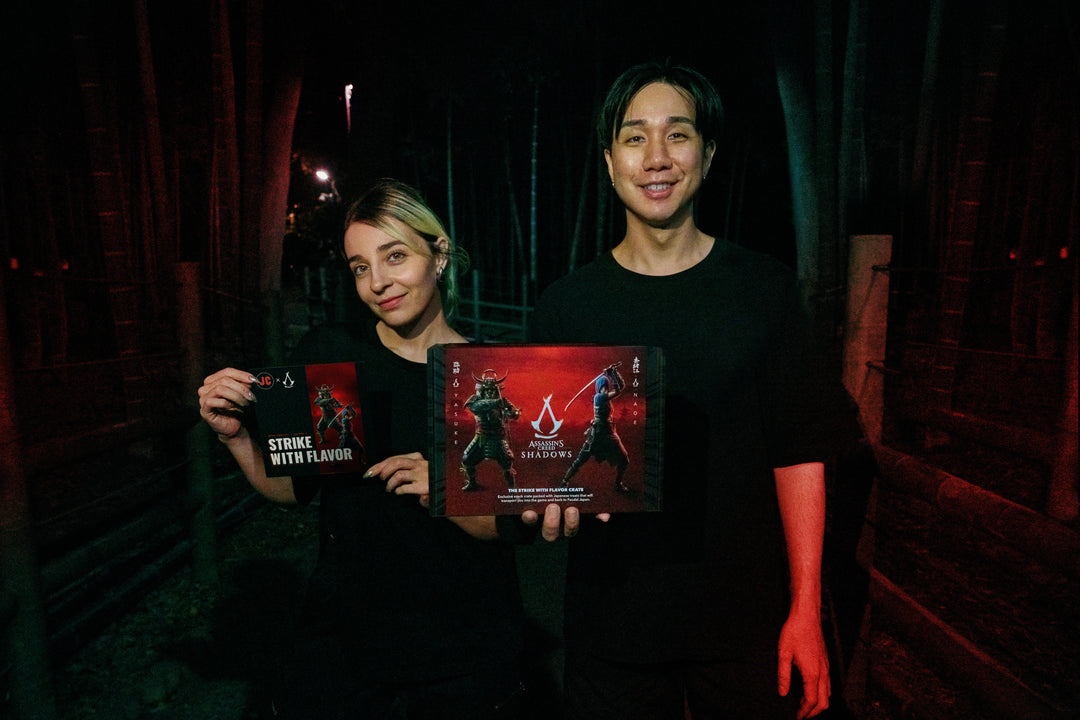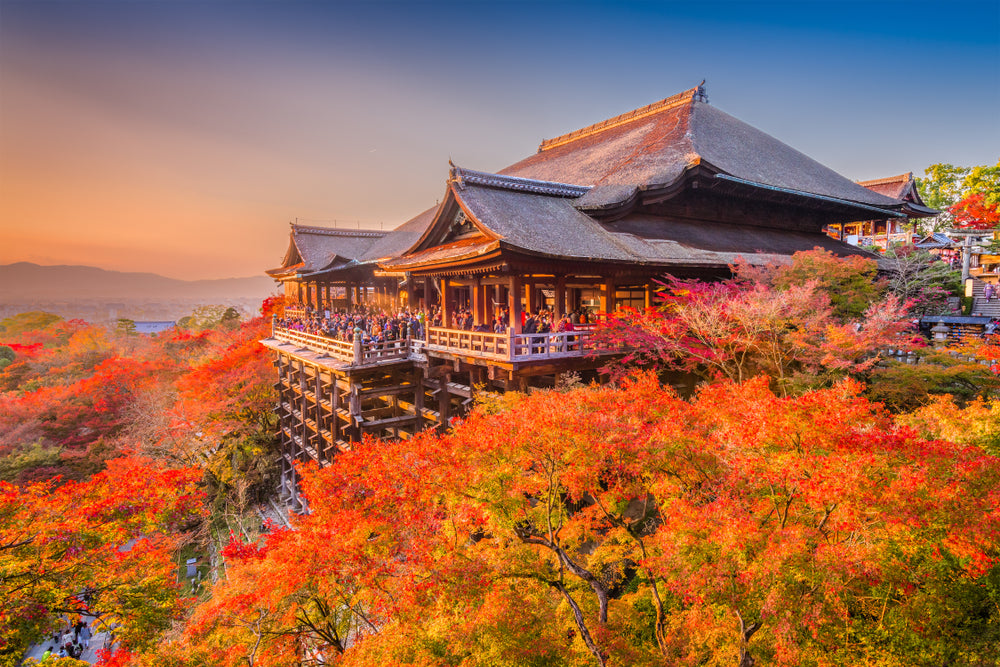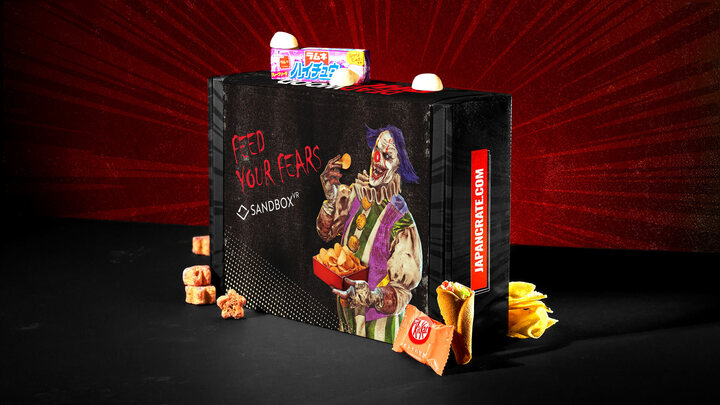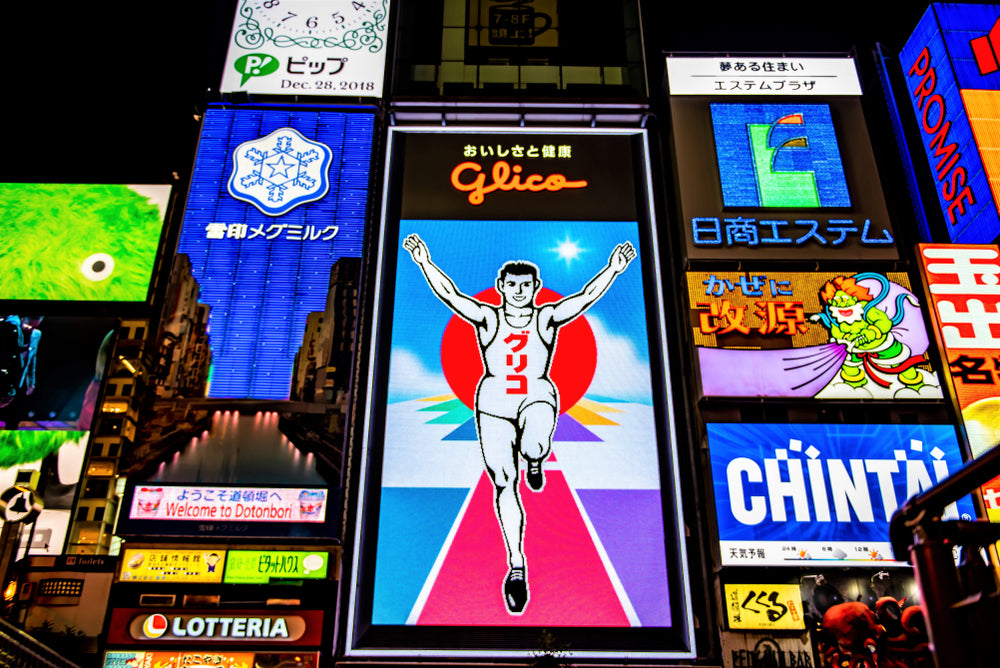Ultimate Guide to Japanese Candy
You’ve probably heard about Japanese sweets through TV shows, anime, and even youtube. However, the extensive showcase of colors, textures, flavors, and brands can be a bit overwhelming (but intriguing). Nevertheless, taking your taste buds on a culture trip to an unknown territory can be fun, so here is the ultimate guide if you have sweet teeth. To start, the general term for all Japanese candy is okashi. There is a massive variety of okashi to explore, from wagashi sweets like mochi, famous types of dagashi like konpeito, and Japan's exclusive flavors of western candy called yogashi.

(Image: Tara’s Multicultural Table)
Traditional sweets through history
To navigate the different types of candy, a great place to start is by looking back at the centuries-old history of these unique treats. Wagashi are Japan’s traditional confections paired to enjoy as a side dish alongside green tea, dating back around the year 710 during the Nara period. One of the most commonly known and oldest types of wagashi is mochi.
Made from pounding and molding rice, mochi is a sweet rice cake treat that usually comes in a spherical shape and has a variety of colors and flavors. This classic treat has evolved over the years to include many different styles. Popular types include daifuku, warabi mochi, and sakura mochi, which are enjoyed during special events like celebrating the new year, cherry blossom season, and so on. During the early Edo period of Japan, resources to create wagashi became scarce and expensive, cheaper sweets with a longer shelf life were curated and marketed to children called dagashi.
Like ‘penny candy’ in the United States, dagashi candy is usually tiny and contains a lot of sugar. A well-liked type of dagashi is konpeito, a sugary rock type candy brought to Japan by Portuguese traders during the early 16th century and given a distinct, colorful Japanese twist. After many years of the success of foreign influence on popular candy curation, many companies from overseas brought snacks like Kit Kat, Oreo, Godiva, and Lindt chocolate and staked their claim in the country and started making exclusive Japan-only flavors of their top-selling products. This brought about the current era of candy in Japan which includes a mix of all three types, wagashi, dagashi, and yogashi.
However, even with the success of other types, by far out of all candy, mochi is the most well-known of all sweets and remains an important symbol in Japanese confectionery.
Mochi: One of the most popular Japanese snacks
With all the popularity surrounding mochi, it has long been debated among japanese people if it is considered candy, sweet snacks or traditional dessert. However, with the introduction of dagashi, which are more modern, sugary, foreign-influenced, and quickly made snacks into the market, it can be hard to imagine mochi being considered a candy. As well as the fact that in the past, mochi was made by hammering steamed Japanese sticky rice with a giant wooden mallet. This process typically did not include any sweet additives, making it a more savory snack than a sweet one. But, as time has progressed and tastes have evolved, sweet-flavored red bean paste and sugar have been added to mochi, and several variations of mochi have come to fruition. Three examples of these are daifuku, warabi mochi and Vanilla ice cream filled mochi.
Daifuku is a sweet mochi that includes not only chewy, sticky rice but has a delicious filling inside that consists of sweet red bean paste, seasonal fruits, and sometimes even ice cream. Daifuku is also known for being bright colors in shades of green, pink, and white. These treats are best paired with green tea and are seen more as a dessert-type snack rather than candy.
Another popular type is warabi mochi; unlike its predecessors, it is a clear jelly-type consistency and is not made from rice. Instead, this famous mochi is created using warabi starch which is then rolled and covered in soybean powder or brown sugar syrup for a rich and unique flavor. This chewy summertime favorite can be seen as more candy than dessert.
With so many different types of mochi, the consensus in Japan is that some types are considered candy while others aren't.

(Image: Shutterstock)
Are Japanese candies healthier?
Because the types of Japanese snacks and candy vary, similarly to snacks from countries all around the globe, some tend to be more healthy than others. For example, more traditionally crafted wagashi made from ingredients like rice, sesame, fruit juice, and green tea tend to have less sugar and more grains. In addition, some modern candies, such as gummies, have several vitamins and collagen to help include health-conscious consumers in Japan. Another natural sweet incorporated into traditional Japanese candy is the sweet potato. Because sweet potato is already naturally sweet, creating hard candy and other enjoyable snacks without adding unnecessary sweet syrup or ingredients makes these types of candy a little more healthy than others on the market. All in all, candies with additives like matcha green tea, sesame, and baked sweet potato add health benefits like antioxidants, collagen, vitamins, and minerals.
But at the end of the day, candy is still candy and should be enjoyed in moderation, just like any other type of sweet.
Traditional Japanese snacks and candies are popular all over the world, but the current most popular candy type by far are the yogashi, western-style sweets. The yogashi tend to be the most highly sought after because of the limited edition flavors that are consistently produced.
Kit kat and the Japanese culture
While Nestle, the company that creates Kit Kat, is from the United Kingdom, Japan arguably has the most comprehensive range and variety of Kit Kats to date. Flavors containing unique ingredients from each prefecture, like Aomori apples, Hokkaido melon, and even sake. It’s easy to see why these chocolate bars are a must-try on any trip to Japan and are often bought as gifts to share with friends and family back home.

More sweets that have become internationally well-known are those with ingredients like Matcha and Sakura. Matcha creates a unique flavor when mixed with sugar and has been made into hard candies, chocolate, pocky sticks, ice cream, bread, gum, and much more. Because the tea leaves to create matcha are grown in Japan, any type of green tea candy has made candy popular.
Cherry blossom, often referred to as Sakura, is another unique ingredient used in traditional Japanese candy and sweets for a limited time in the spring. While eating a pink flower may seem unpalatable to some, the flavor often is sweet with a cherry undertone. The reason Sakura-flavored candy is so popular is that select goodies can only be found in Japan and only within March and April each year.
A way to get limited Japanese Kit Kats and seasonal flavored candies and try the most popular every month all in one place is to get them delivered safely and consistently through monthly candy curation services like Japan Crate.
Best selling Japanese candies
Treats from Japan can range from a few yen to upwards of a thousand in everyday grocery stores, specialty shops, and convenience stores. You can find chocolates and mochi filled with gold flakes and expensive fruits at the higher end. While these treats sound super sweet, they should be consumed quickly to preserve freshness. Whereas most candy falls under the cheaper price category, they are still just as delicious! Enjoy candies like pocky, Puccho chewy candy, Kit Kats, Caplico, and several others, all for under 500 yen. The easiest way to differentiate the price of candy is by recognizing if the snack falls under the category of wagashi, dagashi, or yogashi. The latter two are made with a lot of sugar, aren’t necessarily made to be a counterpart to green tea, and have a longer shelf life.
While there isn’t a particular brand that ranks at #1, chocolate seems to be a fan favorite in Japan because of all of the different varieties available. Almost all Japanese snacks and candy has some chocolate; whether it be chocolate in mochi or chocolate on a biscuit stick with pocky, matcha chocolate, fruit chocolate, and even chocolate jelly, it would be a challenge to find a sweet in Japan that doesn’t have some variation that includes chocolate. Japan has several exclusive chocolate brands like Meiji chocolate, Black Thunder, Melty Kiss,
However, you're still in luck if you don’t like chocolate. Other #1 candies from Japan include sour fettuccine gummies, do-it-yourself (DIY) candy-making sets, milky brand hard candies, and hi-chew, leaving so much more to explore.
Being new to Japanese snacks and candy can be super exciting, but knowing which styles, flavors, and brands you’ll love and where to find them is difficult. A great way to explore a variety of traditional Japanese treats outside of Japan is by trying a Japanese snack box: Japan Crate. Every month a wide variety of old-school dagashi, limited flavor Kit Kats, drinks, and other seasonal wagashi can be sent to your door to discover. But also some traditional snacks such as rice crackers, baby star ramen, Royal milk tea, soy sauce flavor snacks or even soft chewy candy. It's not only about candies but a fair mix of Japanese drinks, Japanese candies and popular Japanese snacks.
Even if you’re no novice to these goodies, a subscription box can give you an advantage in getting the latest snacks and season-limited tidbits. For example, sakura-themed kit kats, region-exclusive candy assortments, and special edition treats made in small quantities only for events can be featured in a subscription box.
Author Bio







Leave a comment